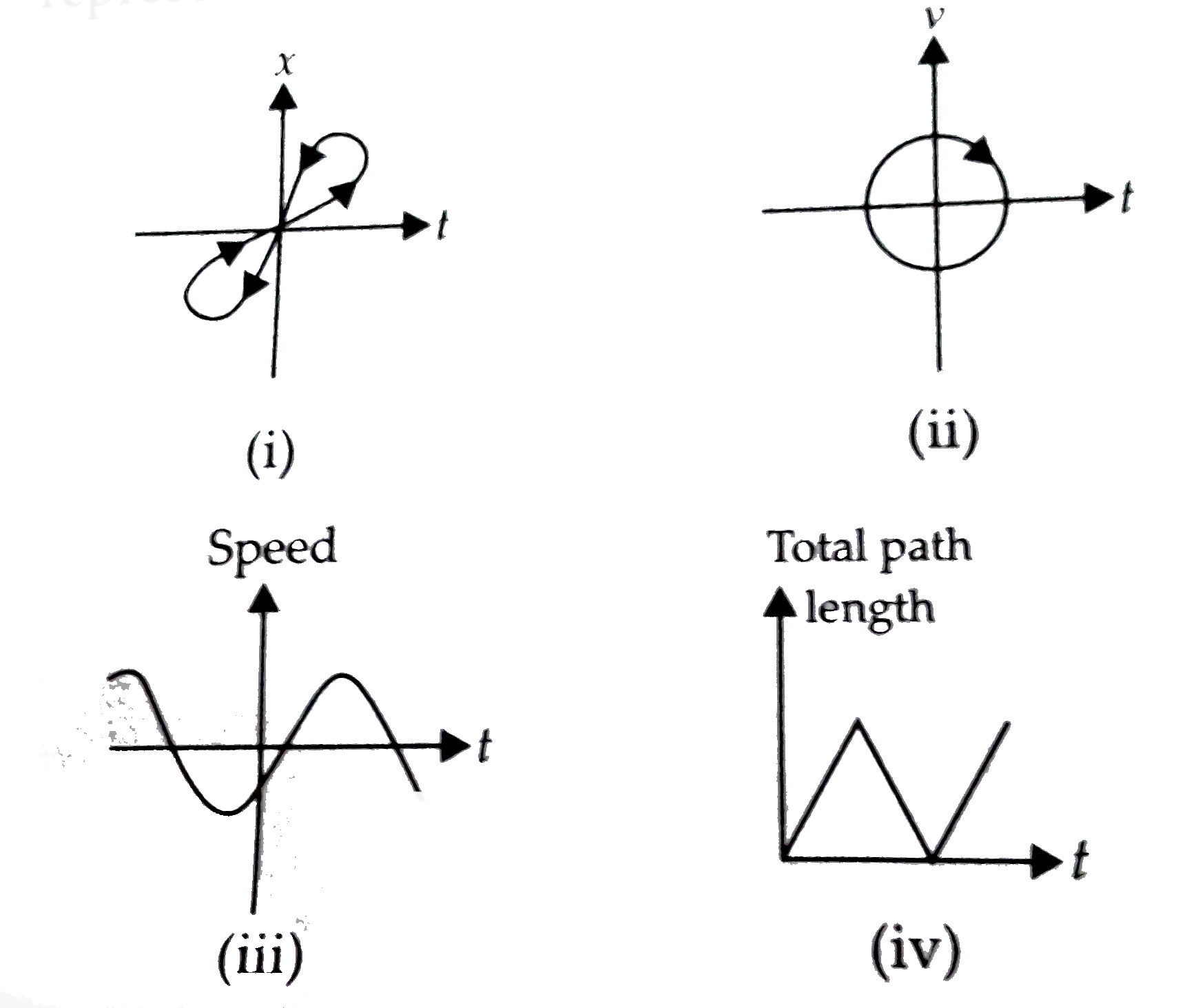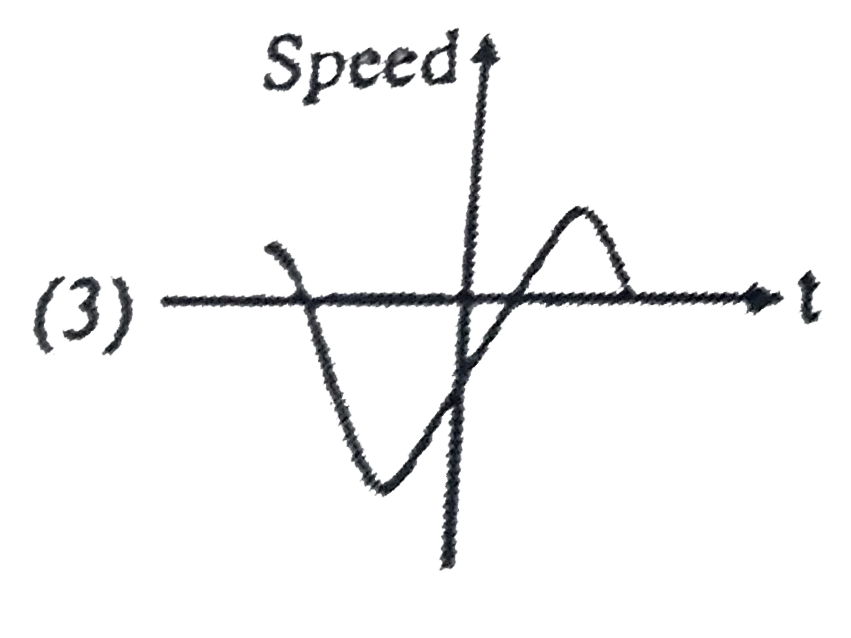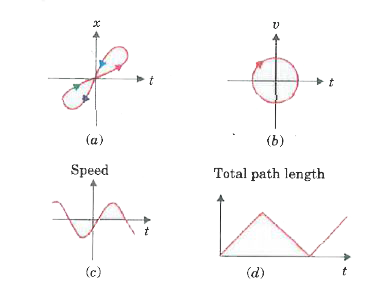Which statements can be possible cases in one/two dimensional motion:
A body has zero velocity and still be accelerating
The velocity of an object reverses direction when acceleration is constant
An object be increasing in speed as its acceleration decreases
None of these
The correct Answer is:A,B
To determine which statements can be possible cases in one or two-dimensional motion, we will analyze each statement one by one.
1. Statement 1: A body has zero velocity and can still be accelerating.
- This statement is true. For example, consider a stone thrown upwards. At its maximum height, the stone's velocity is zero, but it is still under the influence of gravitational acceleration (which is directed downwards). Thus, it is possible for an object to have zero velocity while still experiencing acceleration.
2. Statement 2: The velocity of an object can reverse direction when acceleration is constant.
- This statement is also true. For instance, if an object is moving in a positive direction and experiences a constant negative acceleration, it will eventually slow down to zero velocity and then start moving in the negative direction. This means the velocity can reverse while the acceleration remains constant.
3. Statement 3: An object can be increasing in speed while its acceleration decreases.
- This statement is true as well. For example, if an object is moving with an initial speed of 10 m/s and has an acceleration of 5 m/s², its speed will increase. If the acceleration decreases to 2 m/s², the object will still continue to speed up, albeit at a slower rate. As long as the acceleration remains positive, the speed will continue to increase.
4. Statement 4: None of these are correct.
- This statement is false because all the previous statements (1, 2, and 3) are correct.
Conclusion:
All three statements (1, 2, and 3) are possible cases in one or two-dimensional motion. Therefore, the answer is that statements 1, 2, and 3 are correct.
- This statement is true. For example, consider a stone thrown upwards. At its maximum height, the stone's velocity is zero, but it is still under the influence of gravitational acceleration (which is directed downwards). Thus, it is possible for an object to have zero velocity while still experiencing acceleration.
- This statement is also true. For instance, if an object is moving in a positive direction and experiences a constant negative acceleration, it will eventually slow down to zero velocity and then start moving in the negative direction. This means the velocity can reverse while the acceleration remains constant.
- This statement is true as well. For example, if an object is moving with an initial speed of 10 m/s and has an acceleration of 5 m/s², its speed will increase. If the acceleration decreases to 2 m/s², the object will still continue to speed up, albeit at a slower rate. As long as the acceleration remains positive, the speed will continue to increase.
- This statement is false because all the previous statements (1, 2, and 3) are correct.
All three statements (1, 2, and 3) are possible cases in one or two-dimensional motion. Therefore, the answer is that statements 1, 2, and 3 are correct.
Topper's Solved these Questions
- KINEMATICSBook:FIITJEEChapter:KINEMATICSExercise:ASSIGNMENT PROBLEMS (OBJECTIVE) LEVEL-II (COMPREHENSIONS-I)
Explore 3 Videos
- KINEMATICSBook:FIITJEEChapter:KINEMATICSExercise:ASSIGNMENT PROBLEMS (OBJECTIVE) LEVEL-II (COMPREHENSIONS-II)
Explore 3 Videos
- KINEMATICSBook:FIITJEEChapter:KINEMATICSExercise:ASSIGNMENT PROBLEMS (OBJECTIVE) LEVEL-I (ASSERTION REASONING TYPE)
Explore 2 Videos
- HEAT AND TEMPERATUREBook:FIITJEEChapter:HEAT AND TEMPERATUREExercise:NUMERICAL BASES QUESTIONS
Explore 1 Video
- LAWS OF MOTIONBook:FIITJEEChapter:LAWS OF MOTIONExercise:COMPREHENSION-III
Explore 2 Videos
Similar Questions
Knowledge Check
Which of the following statements can be possible cases in one//two dimensional motion ?
AA body has zero velocity and is still accelerating.BThe velocity of an object reverses direction when acceleration is constant.CAn object's speed goes on increasing even magnitudes of its acceleration decreases.DNone of theseWhich of the following graphs cannot possibly represent one dimensional motion of a particle?
 A(i) and (ii)B(ii) and (iii)C(i), (ii) and (iii)DAll four
A(i) and (ii)B(ii) and (iii)C(i), (ii) and (iii)DAll fourLook at the graphs (a) to (d) carefully and indicate which of these possibly represents one dimensional motion of a particle ?
A B
B C
C D
D
Which of the following graphs cannot possibly represent one dimensional motion of a particle.
 .
.
View SolutionWhich of the velocity-time (v - 1) graphs shown in figure can possibly represent one-dimensional motion of a particle? (A) (B)
View SolutionDifferentiatde between one, two and three dimensional motion.
View SolutionIntroduction Of Two Dimensional Motion
View SolutionWhich of the following graphs cannot represent one dimensional motion of a particle?
View Solution
